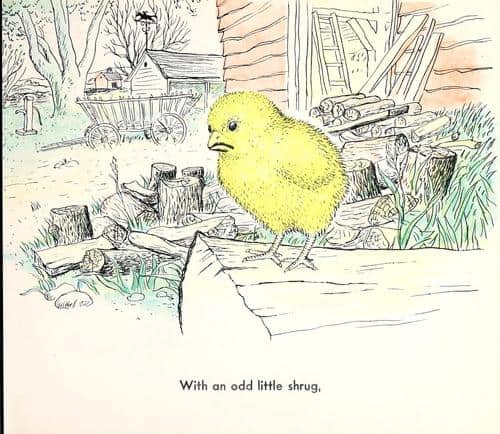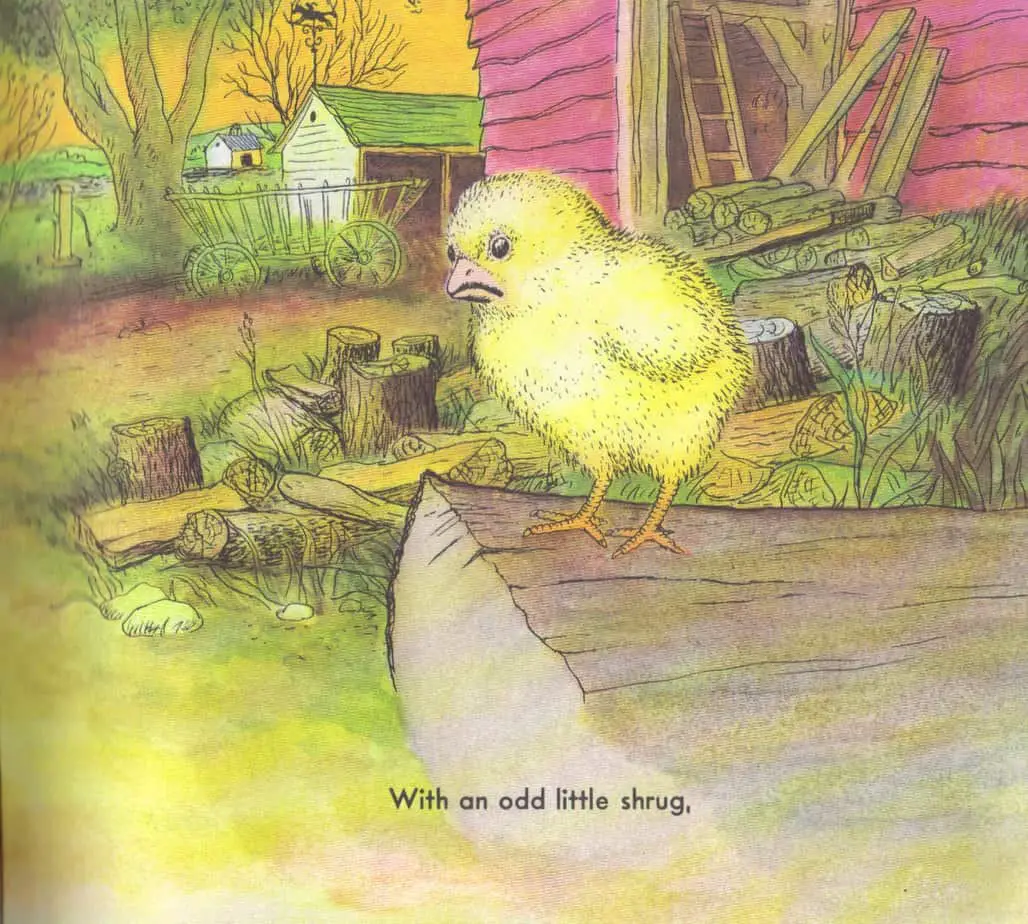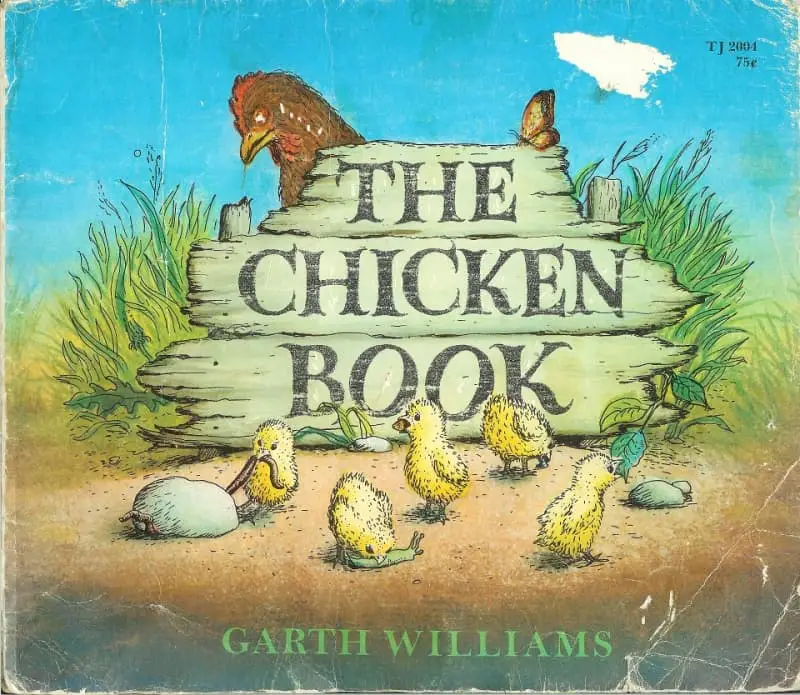This month I’m blogging a series aimed at teaching kids how to structure a story. This seven-step structure works for all forms of narrative. It works for picture books, songs, commercials, films and novels. Today I take a close look at a story so simple you’d wonder how it could include all seven steps. Yet it does, between words and pictures. Today’s picture book is The Chicken Book by Garth Williams, first published in 1946.
This makes The Chicken Book an example of literature which emerged between the first and second golden ages of children’s literature, when the publishing industry very much took a back seat to other world events. Namely, Garth Williams wrote and illustrated The Chicken Book at the end of the second World War.
The ideology of this story is more typical of the pre-war period. Child characters from the first golden age were self-sufficient, free-range and healthy and robust. The chicks (child stand ins) are not like that at first, but are chided accordingly and end up self-sufficient by the end. It’s basically a celebration of Puritan work ethic. During the wars, there was no room for anyone to take it easy. It was all hands to the pump. Women were seconded to do ‘men’s jobs’ (and didn’t easily retire to the home once the war was over, either.) With mothers out working in bullet factories and whatnot, the war era child was required to pull their own weight within the family. These chicks are wartime chicks.
Garth Williams is a standout illustrator of American children’s books. He illustrated Little House on the Prairie and Charlotte’s Web, so his work is still widely seen. His father was a cartoonist and his mother was a landscape painter, so it’s no surprise he combined those interests and ended up in children’s books. He also studied architecture, and brought his drafting skills into his illustrative work. The Chicken Book is one of his first works from a prolific career, and the first as both writer and illustrator.
The less we know about the man himself, the better we can enjoy his legacy. There is a surprising number of people who’ve made outstanding work for children yet in their personal lives were hardly upstanding citizens. Obituaries contain the glowing bits, so here’s a link to that, from 1996.
STORY STRUCTURE OF THE CHICKEN BOOK
WHO IS THE MAIN CHARACTER?
There is an entire brood of main characters in this picture book, but they are all identical. They are siblings and they look the same. They behave the same. For story purposes, this book has one main character — a chicken.
The other question to ask here: What is wrong with them?
They’re a bit lazy, or haven’t yet learned to do for themselves.
WHAT DO THEY WANT?
They all want food. Sure, they each want something slightly different — one even wants a piece of gravel for some reason. But basically they want something to peck and munch.
OPPONENT/MONSTER/BADDIE/ENEMY/FRENEMY
If The Chicken Book were a longer story an outside opponent would be necessary, but this is one of those super short narratives which gets away with ‘the main character is their own biggest enemy’.
WHAT’S THE PLAN?
Since these chicks are by their nature passive, they have no plan. That’s the entire problem. They literally just stand there and do nothing.
When your main character has no plan, someone else in the story has to make a plan for them. (It’s the mother who makes the plan.)
BIG STRUGGLE
Because Garth Williams places his ‘camera’ near the ground, when the mother hen turns up she’s formidable. When she tells the chicks to go ahead and scratch it feels like a telling off — at least, that’s how it felt as child reader. The Big Battle is the mother glaring at the chicks while standing over them.
WHAT DOES THE CHARACTER LEARN?
When the chicks scratch they immediately find their hearts’ desire.
HOW WILL LIFE BE DIFFERENT FROM NOW ON?
This phase is omitted from the story because we can extrapolate on our own: We know that the chicks will keep scratching and finding good things to eat.
COMPARE AND CONTRAST THE CHICKEN BOOK
After The Fall is another example of a main character whose biggest opponent is themselves, although in Dan Santat’s book, Humpty’s anxiety is almost turned into a separate entity.
England’s Enid Blyton is an example of a children’s author who was writing and publishing prolifically all through this world war period of the 20th century. Notably, Enid Blyton makes no direct reference to war, anywhere. For her, writing was an escape, and her stories provided an escape for her young readers equally. In The Chicken Book, America’s Garth Williams has created a utopian version of an American farm, in which food is plentiful if only you know how to look for it.
You might also compare the original printing with a later one from the 1970s, in which printing technologies now allowed mass printing of highly coloured double spreads. My version, printed in the 1970s, is the full-coloured version. Printing technologies have made further advances since then.



